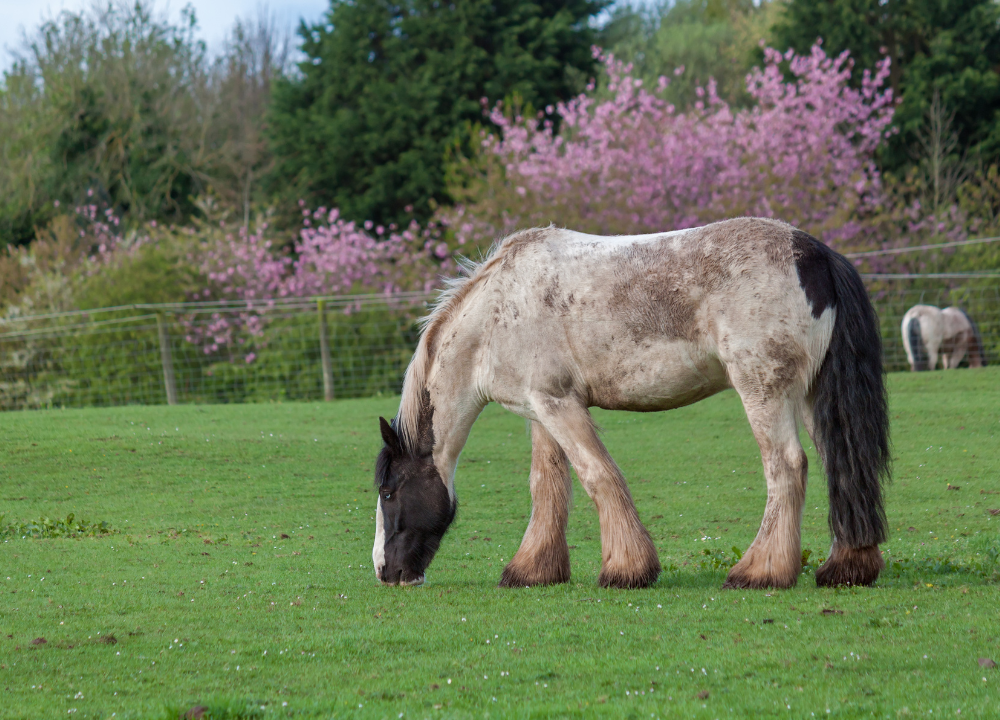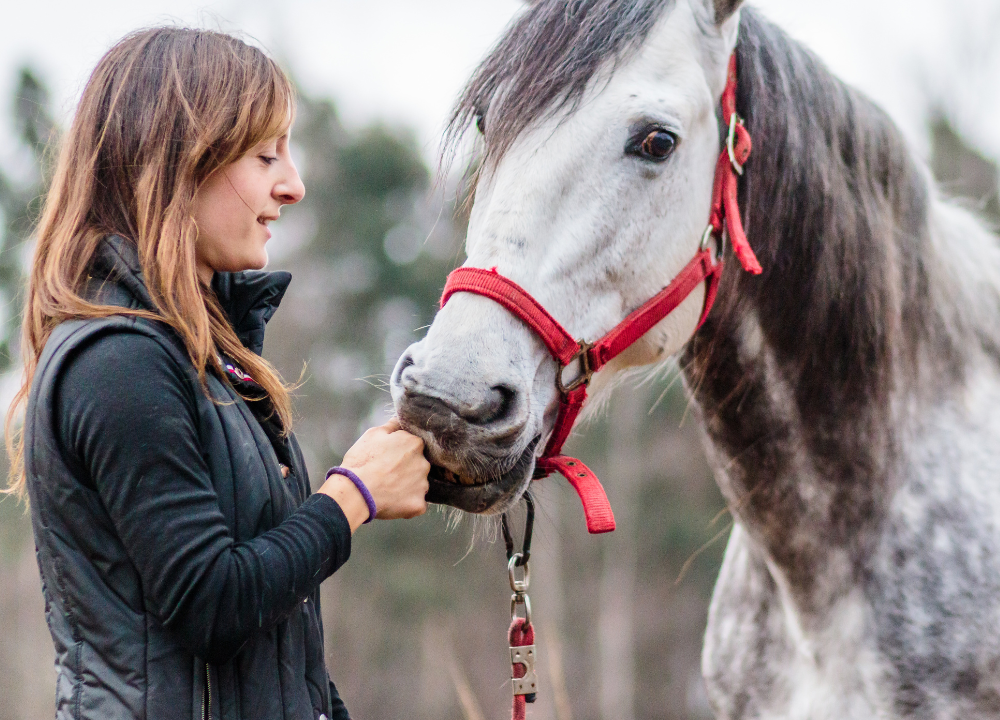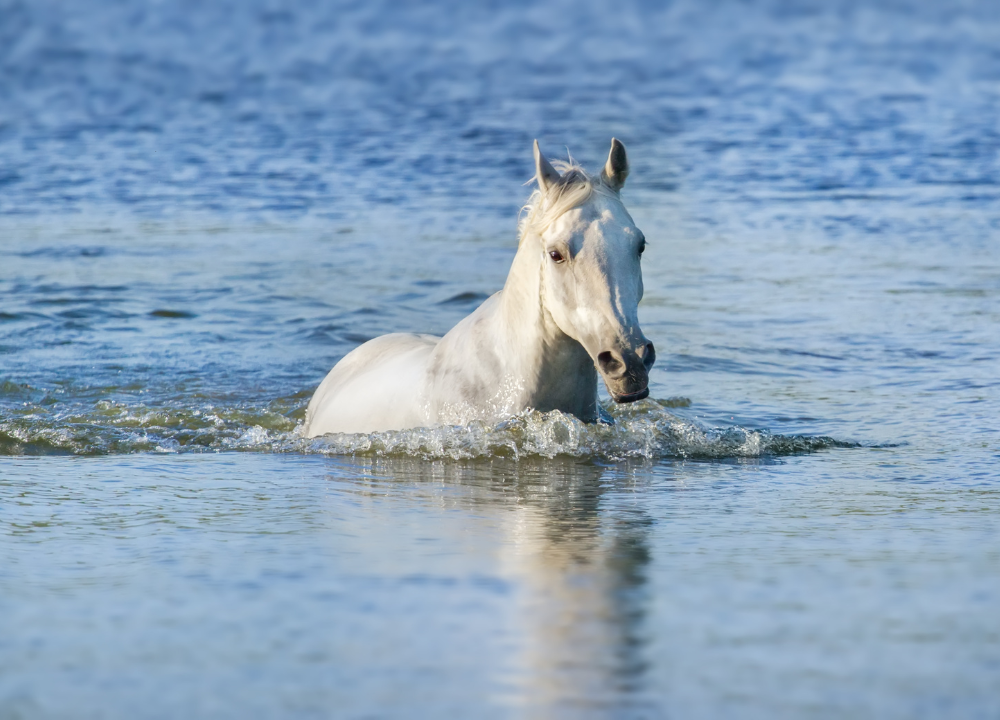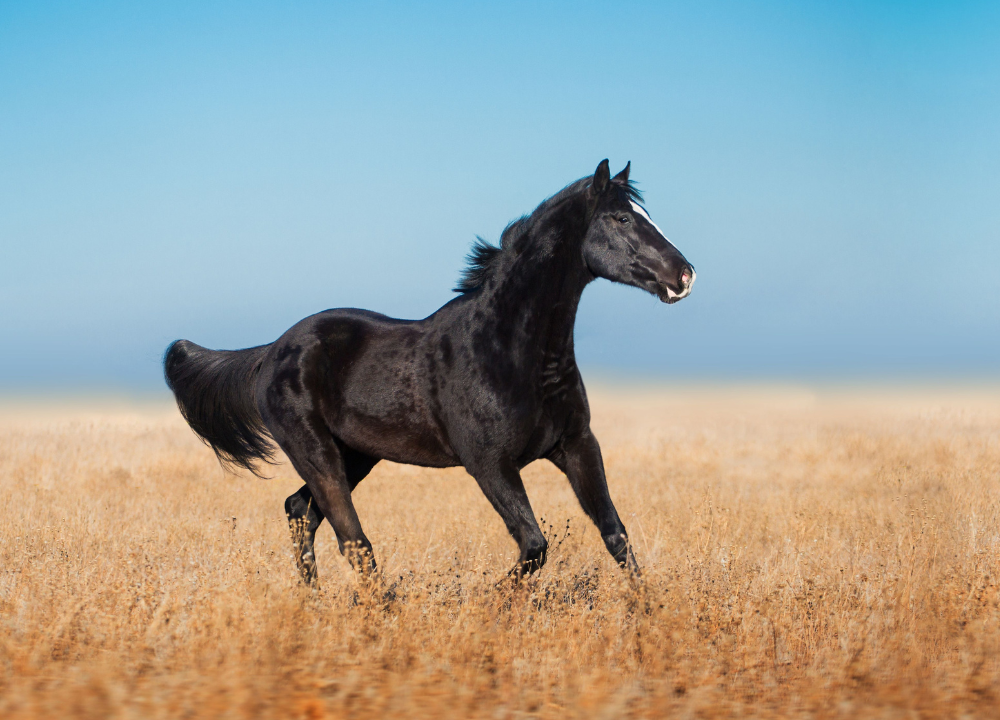The Shire Horse is gaining popularity in equestrian sports due to its strength and versatility. This breed offers a unique blend of power and grace.
Shire Horses, known for their impressive size and strength, are increasingly being recognized in the equestrian world. These gentle giants, originally bred for heavy labor, are now showcasing their talents in various competitive arenas. Their calm temperament and remarkable endurance make them ideal for a range of activities, from show jumping to dressage.
Enthusiasts appreciate their majestic appearance and reliable nature, making Shire Horses a rising star in the sport. Their growing popularity is a testament to their adaptability and the unique charm they bring to equestrian events.
Table of Contents
History Of Shire Horse
The Shire Horse is making waves in the world of equestrian sports. Known for their immense size and strength, these gentle giants are becoming the new favorites. But before delving into their current popularity, let’s explore the fascinating history of Shire Horses. Understanding their roots helps us appreciate their journey and their rising status in equestrian sports.
Origins And Development
The Shire Horse traces its origins back to the medieval Great Horse. Used by knights in armor, these horses were prized for their strength and size. Around the 16th century, the breed started to evolve.
Key points in their development include:
- 16th Century: The breed began to take shape in England.
- Early Breeders: Farmers and landowners selectively bred them for agricultural work.
- Industrial Revolution: Shire Horses became essential for pulling heavy loads in cities and on farms.
During the Industrial Revolution, the Shire Horse’s role expanded. They pulled barges, wagons, and plows, showcasing their versatility and strength. Records from this era show their significant contributions:
| Era | Role |
|---|---|
| Medieval Times | War Horse for Knights |
| 16th Century | Agricultural Work |
| Industrial Revolution | Pulling Heavy Loads |
Selective breeding during this time focused on increasing their size and strength. This resulted in the modern Shire Horse, known for its impressive stature and gentle nature.
Popularity In The Past
Shire Horses enjoyed immense popularity in the past. In the 19th and early 20th centuries, they were indispensable. Their strength made them the go-to choice for heavy-duty tasks.
Highlights of their past popularity include:
- Agricultural Use: Farmers relied on them for plowing and transporting goods.
- Urban Use: In cities, they pulled trams and delivery wagons.
- Military Use: They were also used in the military for pulling artillery.
During the peak of their popularity, there were numerous Shire Horse shows. These events showcased their beauty and strength, drawing large crowds. A typical show event featured:
| Event | Highlights |
|---|---|
| Shire Horse Shows | Showcasing beauty and strength |
| Agricultural Fairs | Demonstrating plowing skills |
| Urban Events | Parades and heavy load competitions |
By the mid-20th century, the use of machinery reduced their numbers. Yet, their historical significance remains, and their resurgence in equestrian sports is a testament to their enduring legacy.
Physical Characteristics
The Shire Horse is becoming a rising star in equestrian sports. Known for its majestic appearance and incredible strength, the Shire Horse captivates enthusiasts worldwide. One of the key aspects that set this breed apart is its unique physical characteristics.
Size And Weight
The Shire Horse is one of the largest horse breeds. These horses can grow to impressive heights and weights.
Here are some key points about their size and weight:
- Height: Shire Horses typically stand between 16 to 18 hands tall (64 to 72 inches).
- Weight: These horses can weigh between 1,800 to 2,400 pounds.
Due to their massive size, Shire Horses possess remarkable strength. They can pull heavy loads and perform demanding tasks. This makes them perfect for various equestrian sports and working roles.
Here is a table summarizing their size and weight:
| Height | Weight |
|---|---|
| 16-18 hands (64-72 inches) | 1,800-2,400 pounds |
Their large size also means they have a calm and gentle temperament. This makes them easy to handle despite their size.
Distinctive Features
Shire Horses have several distinctive features that make them stand out. These features contribute to their growing popularity in equestrian sports.
Some of the most noticeable characteristics include:
- Feathering: Long hair around the lower legs, known as feathering, is a hallmark of the Shire Horse.
- Coat Colors: Common coat colors include black, bay, and grey. Rarely, they may have a chestnut coat.
- Large Hooves: Their large, strong hooves support their significant weight and size.
Shire Horses also have a broad, muscular build. Their powerful bodies enable them to excel in various equestrian activities. Their well-defined heads feature expressive eyes and large nostrils.
Their distinct feathering and robust build make them easy to identify. This unique appearance, combined with their strength and gentle nature, makes them perfect for shows and competitions.
All these features contribute to the Shire Horse’s growing fame in the equestrian world. Their majestic appearance and remarkable abilities make them a favorite among horse enthusiasts.
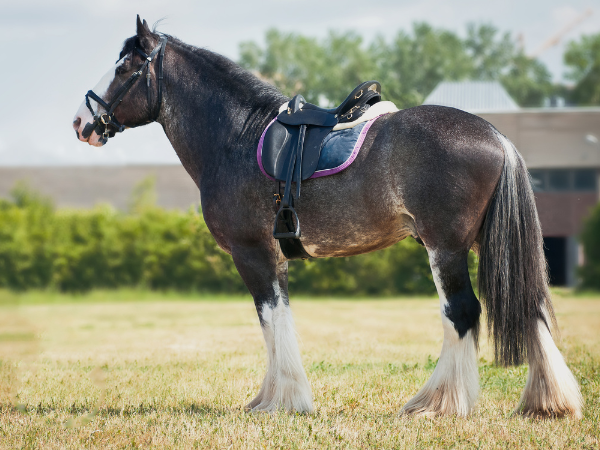
Colors And Markings Of Shire Horse
The Shire Horse is quickly becoming a favorite in equestrian sports. Their majestic appearance and calm demeanor captivate many. One of their most striking features is their array of colors and markings. These traits make them stand out in competitions and parades. Understanding the colors and markings of Shire Horses adds to their appeal.
Coat Colors
Shire Horses come in a few distinct coat colors. Their coats are usually solid and rich. The most common colors include:
- Black: This is a classic color for Shire Horses. The black coat is sleek and shiny, especially in the sunlight.
- Bay: Bay Shire Horses have a rich brown coat with black mane and tail. Their legs are often black too.
- Brown: The brown coat can range from light to dark shades. It provides a warm, earthy appearance.
- Grey: Grey Shire Horses start life with a darker coat. Over time, their coat lightens to a stunning silver or white color.
Each coat color has its own charm and beauty. Some Shire Horses may have a slight variation in their color shades. This uniqueness adds to their individual appeal. Judges in equestrian sports often admire these beautiful coats. The color of a Shire Horse can enhance their presence and performance in events.
Distinctive Markings
Shire Horses also have distinctive markings that set them apart. These markings add to their majestic look. Common markings include:
- White Socks: Many Shire Horses have white socks on their legs. These white patches can be on one, two, or all four legs.
- Blaze: A blaze is a white stripe running down the horse’s face. It can be narrow or wide, adding a striking contrast to their coat.
- Star: Some Shire Horses have a small white star on their forehead. This marking is often round or diamond-shaped.
- Snip: A snip is a small white mark on the horse’s nose. It can be subtle but adds a touch of uniqueness.
These markings make each Shire Horse unique. They can help in identifying individual horses in a herd. In equestrian sports, these markings often highlight the horse’s features. Judges and audiences appreciate the distinctive look of each horse. These markings, combined with their coat colors, create a stunning visual effect.
Diet And Nutrition: Shire Horse
The Shire Horse is becoming a popular choice in equestrian sports due to its strength and gentle nature. To maintain their performance, a proper diet and nutrition plan is essential. Understanding the specific dietary needs of Shire Horses ensures they remain healthy and active.
Feeding Requirements
Shire Horses are large and require a substantial amount of food to maintain their energy levels. Their diet should include:
- High-quality hay: The primary component of their diet. They should consume 1.5 to 2% of their body weight in hay daily.
- Grain: Offers additional calories and nutrients. Common grains include oats, barley, and corn.
- Fresh water: Always ensure access to clean, fresh water. They drink 10-12 gallons daily.
A typical daily feeding schedule for a Shire Horse might look like this:
| Time | Feed |
|---|---|
| Morning | 10 lbs of hay, 4 lbs of grain |
| Afternoon | 5 lbs of hay, 2 lbs of grain |
| Evening | 10 lbs of hay, 4 lbs of grain |
Adjust the amounts based on their activity level and weight. Always consult with a vet for personalized advice.
Special Nutritional Considerations
Shire Horses have unique nutritional needs due to their size and activity level. Vitamins and minerals are crucial. Ensure they get:
- Calcium and phosphorus: Important for bone health. Ensure a balanced ratio.
- Vitamin E and selenium: Essential for muscle health, especially for working horses.
- Salt: Provide a salt block to meet sodium needs.
Supplementation might be necessary for some Shire Horses:
- Joint supplements: Glucosamine and chondroitin can support joint health.
- Digestive aids: Probiotics help maintain a healthy gut.
- Fat supplements: For extra calories without adding bulk, consider flaxseed or rice bran.
Monitor their weight and condition regularly. Adjust their diet to avoid obesity or malnutrition. Regular vet check-ups help keep their diet on track and ensure they are in peak condition for equestrian sports.
Shire Horse In Modern Equestrian Sports
The majestic Shire Horse is becoming a sensation in modern equestrian sports. Known for their strength, beauty, and gentle nature, these horses are now stepping into competitive arenas. Their versatility and impressive stature make them a favorite among equestrians worldwide.
Competitive Events
Shire Horses are shining in various competitive events. Their strength and agility make them a perfect fit for many sports. Here are some popular events where Shire Horses excel:
- Dressage: Shire Horses are performing complex movements with grace and precision.
- Show Jumping: Their power helps them clear high obstacles effortlessly.
- Driving Competitions: Their strength and stamina make them ideal for carriage driving.
- Trail Riding: Shire Horses navigate rough terrains with ease.
Below is a table showcasing some key attributes of Shire Horses in these events:
| Event | Key Attributes |
|---|---|
| Dressage | Grace, Precision |
| Show Jumping | Power, Agility |
| Driving Competitions | Strength, Stamina |
| Trail Riding | Endurance, Sure-footedness |
These events highlight the versatility and capabilities of Shire Horses, making them a rising star in equestrian sports.
Training And Handling
Training and handling Shire Horses require special techniques due to their size and strength. Proper training ensures they perform well and stay healthy.
Starting with Basics: Training begins with basic commands and groundwork. Consistent routines help build trust and understanding.
Advanced Training: Once basic training is complete, advanced techniques are introduced. This includes dressage movements, jumping techniques, and driving skills.
Key aspects of handling Shire Horses include:
- Gentle Handling: Shire Horses respond well to gentle and firm handling.
- Regular Exercise: Daily exercise keeps them fit and active.
- Proper Nutrition: A balanced diet is essential for their health.
- Regular Health Checks: Regular vet check-ups ensure they remain in top condition.
Here’s a simple training schedule for a Shire Horse:
| Day | Activity |
|---|---|
| Monday | Basic Commands |
| Tuesday | Groundwork |
| Wednesday | Dressage Movements |
| Thursday | Jumping Techniques |
| Friday | Driving Skills |
| Saturday | Free Exercise |
| Sunday | Rest Day |
With proper training and handling, Shire Horses are proving to be exceptional competitors in modern equestrian sports.
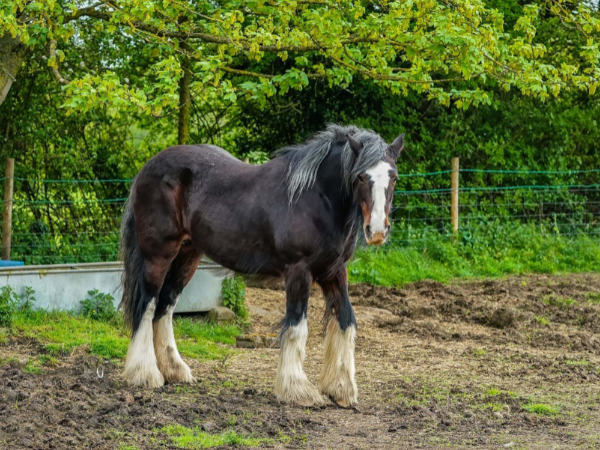
Health
The Shire Horse, known for its impressive size and strength, is quickly gaining popularity in equestrian sports. With this rise, understanding the health aspects of these majestic horses becomes crucial. Proper health care ensures their longevity and peak performance in competitions.
Common Health Issues
Shire Horses, like all breeds, have specific health issues. Owners must be aware of these to provide the best care.
Common health problems in Shire Horses include:
- Joint Issues: Due to their size, Shire Horses often suffer from joint problems. Arthritis and other joint issues can limit their movement.
- Hoof Problems: Their large hooves can develop cracks and infections if not properly maintained.
- Respiratory Issues: Shire Horses can be prone to respiratory problems, especially if kept in poorly ventilated areas.
- Obesity: These horses can gain weight easily, leading to other health complications.
Understanding these issues helps in providing timely care and preventing further complications. Regular vet check-ups and vigilant monitoring are key.
Preventative Care
Preventative care is essential to maintain the health of Shire Horses. Simple daily routines can go a long way in ensuring their well-being.
Key preventative care practices:
- Regular Exercise: Ensure Shire Horses get enough exercise. This helps prevent obesity and keeps their joints healthy.
- Proper Diet: A balanced diet is crucial. Avoid overfeeding to prevent obesity and other related issues.
- Hoof Care: Regular hoof trimming and cleaning are essential. This prevents cracks and infections.
- Ventilation: Ensure their living area is well-ventilated. This helps prevent respiratory problems.
- Regular Vet Visits: Schedule regular check-ups with a vet. Early detection of issues can prevent serious health problems.
With these preventative measures, Shire Horses can thrive in equestrian sports, showcasing their strength and grace.
Shire Horse Breeding And Uses
The Shire Horse is a majestic breed, known for its strength and gentle temperament. With its roots in England, the Shire Horse has become a rising star in equestrian sports. This section will delve into the breeding practices and common uses of this extraordinary breed.
Breeding Practices
Breeding Shire Horses involves careful selection to maintain their strong and gentle characteristics. Breeders focus on preserving the breed’s traits and ensuring healthy offspring. They select the best mares and stallions based on:
- Size: Shire Horses are among the largest horse breeds. Breeders select horses that meet specific height and weight criteria.
- Temperament: The gentle nature of Shire Horses makes them ideal for various activities. Breeders look for calm and friendly temperaments.
- Health: Breeding pairs must be free from genetic disorders. Regular veterinary check-ups are crucial.
- Conformation: A well-proportioned body is essential. Breeders ensure that horses have strong legs and a sturdy frame.
Breeding Shire Horses also involves proper care of pregnant mares and foals. Mares need a balanced diet, regular exercise, and a stress-free environment. Once the foals are born, they require close monitoring and specialized nutrition.
Breeders often use a combination of traditional and modern techniques. Artificial insemination is sometimes used to enhance genetic diversity and ensure successful breeding. The table below summarizes key breeding practices:
| Aspect | Details |
|---|---|
| Selection Criteria | Size, Temperament, Health, Conformation |
| Care for Mares | Balanced Diet, Regular Exercise, Stress-Free Environment |
| Foal Care | Close Monitoring, Specialized Nutrition |
| Techniques | Traditional and Modern, Artificial Insemination |
Common Uses
Shire Horses are versatile and have various uses in modern equestrian activities. They excel in both traditional and contemporary roles. Some of the common uses include:
- Agricultural Work: Historically, Shire Horses were used for plowing fields. Their strength makes them perfect for heavy farm work.
- Logging: They are ideal for pulling logs in forests. Their power and agility help them navigate tough terrains.
- Equestrian Sports: Shire Horses participate in competitive events. Their elegance and strength impress judges and audiences.
- Parades and Shows: Their majestic appearance makes them stars in parades. They often feature in historical reenactments and shows.
- Therapeutic Riding: Their calm demeanor makes them suitable for therapeutic riding programs. They help individuals with special needs.
Shire Horses also play a role in ceremonial duties. They are often seen in parades, carrying banners, or pulling carriages. Their imposing size and gentle nature make them crowd favorites.
The breed’s versatility ensures its continued popularity. Whether in a farm, a forest, or a show ring, Shire Horses prove their worth. This breed’s unique qualities make it a true rising star in equestrian sports.
Is The Shire Horse Right For You?
The Shire Horse is gaining fame in equestrian sports. Its massive size and gentle nature make it a favorite. But, is the Shire Horse right for you? Let’s explore its temperament, personality, care, and maintenance needs.
Temperament And Personality
The Shire Horse is known for its calm and gentle nature. This makes it ideal for beginners and kids. Here are some key points about its temperament and personality:
- Gentle Giant: Despite its size, the Shire Horse is very gentle.
- Friendly: They enjoy human interaction and are very social.
- Patient: Shire Horses are known for their patience, making them great for training.
These horses are also very intelligent. They can learn new tasks quickly and remember them. Their calm demeanor makes them less likely to spook. This makes them safe for riding and working. Overall, their temperament and personality make them a joy to be around.
Care And Maintenance
Shire Horses require proper care and maintenance. Due to their large size, they need more food and space. Here’s a breakdown of their care needs:
| Aspect | Requirements |
|---|---|
| Feeding | High-quality hay and grains, plenty of fresh water. |
| Housing | Large stables with ample space to move around. |
| Grooming | Regular brushing, hoof cleaning, and bathing. |
Shire Horses also need regular veterinary check-ups. Their size can make them prone to certain health issues. Regular exercise is essential to keep them healthy. This includes riding, walking, and other physical activities.
Proper care and maintenance ensure the Shire Horse remains happy and healthy. This makes them a reliable partner in equestrian sports and daily activities.
Frequently Asked Questions
What Makes Shire Horses Good For Equestrian Sports?
Shire horses are strong, versatile, and gentle. Their large size and calm demeanor make them ideal for various equestrian activities, including dressage and competitive driving.
How Do Shire Horses Perform In Dressage?
Shire horses excel in dressage due to their powerful build and grace. Their natural balance and willingness to learn make them standout performers in this discipline.
Are Shire Horses Suitable For Beginners?
Yes, Shire horses are excellent for beginners. They are gentle giants with calm temperaments, making them easy to handle and train.
What Is The History Of Shire Horses In Sports?
Shire horses have a rich history in sports, originally used for pulling heavy loads. Today, they are celebrated in equestrian sports for their strength and versatility.
Conclusion
The Shire Horse is transforming equestrian sports with its strength and grace. Its popularity continues to grow. Enthusiasts appreciate its versatility and gentle nature. This majestic breed is set to shine even brighter in the equestrian world. Embrace the Shire Horse, and experience a remarkable equestrian journey.
